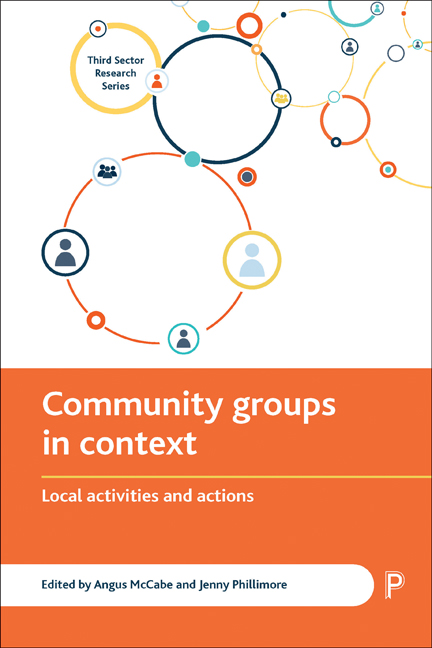Book contents
- Frontmatter
- Contents
- List of tables and figures
- Foreword
- Series editor’s foreword
- Acknowledgements
- Notes on contributors
- Introduction Why get below the radar? The importance of understanding community groups and activities
- Part One Scoping and mapping community actions and activities
- Part Two Community groups and activities in context
- Part Three Under-explored radars
- Part Four Thinking about voice, learning and emotion below the radar
- Index
two - Getting below the radar: micro-mapping ‘hidden’ community activity
Published online by Cambridge University Press: 05 April 2022
- Frontmatter
- Contents
- List of tables and figures
- Foreword
- Series editor’s foreword
- Acknowledgements
- Notes on contributors
- Introduction Why get below the radar? The importance of understanding community groups and activities
- Part One Scoping and mapping community actions and activities
- Part Two Community groups and activities in context
- Part Three Under-explored radars
- Part Four Thinking about voice, learning and emotion below the radar
- Index
Summary
Chapter aims
This chapter aims to:
• identify techniques for mapping small-scale and semi-formal ‘below the radar’ community groups and activities;
• explore the challenges of getting below the radar;
• place these activities within the wider context of civil society, the voluntary sector and policy initiative.
Introduction
As noted in Chapter One, below the radar has been used as a shorthand term for small voluntary organisations, community groups, semi-formal and informal activities in the third sector (Phillimore et al, 2010), more traditionally known as the ‘community sector’.
The majority of statistical analyses on the third sector are drawn from administrative records collected for other purposes, such as the Charity Commission register of recognised charities in England and Wales or the register of Companies Limited by Guarantee in Companies House (Backus and Clifford, 2010; Clark et al, 2010). While knowledge from these sources contributes towards understanding an important part of the sector, it is only a part (Clark et al, 2010; Phillimore et al, 2010). With claims that most organisations in the sector do not appear on official lists, combined with assertions about their ‘distinctiveness’, there has been interest in capturing those ‘uncounted groups’ that do not appear in national data sets and local directories. Examples include a pilot study commissioned by the Cabinet Office (Ipsos MORI Social Research Institute, 2010), research for the Third Sector Trends Study commissioned by the Northern Rock Foundation (Mohan et al, 2011) and Marcus and Tidey's (2015) pilot data-driven approach to identifying below the radar groups.
Whichever research approach is taken, there still remain challenges in capturing and understanding the differences between what constitutes ‘above’ and ‘below’ the radar groups. To illustrate, in the case of work that adopts an approach of exploring a perceived ‘absence’ of voluntary activity (so-called ‘charity deserts’ – Lindsey, 2012), Mohan (2011) notes ‘formidable’ challenges in matching information between local listings and administrative records both in terms of the quality of local listings and the different definitional boundaries used for what is included. Further, he notes that this has contributed to varied estimated ratios on the size of what is on or below the radar: ‘… in terms of entities with at least some recognisable degree of organisation, the numbers of third sector organisations might vary by a factor of as many as nine’ (Mohan, 2011, p 4).
- Type
- Chapter
- Information
- Community Groups in ContextLocal Activities and Actions, pp. 27 - 48Publisher: Bristol University PressPrint publication year: 2017



